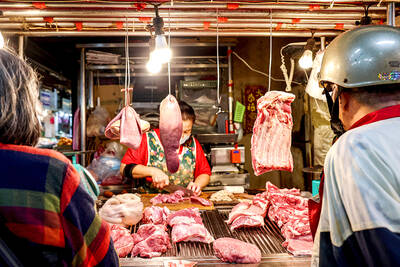How will our universe come to an end? Will it rip to shreds in a flash? Collapse in on itself? Or will it slowly freeze to death? Scientists are imaging the unimaginable. And they’re coming up with some wild ideas about how it’s all going to end. This is the end of the universe. A battle is taking place in the farthest reaches of space. No one can see it, but scientists are certain that it’s happening and that the outcome is grim. The universe is going to end. It won’t happen for billions of years, but there is no way out. Working out how it will end is the challenge of astrophysicists around the world. They’re pointing high-tech equipment out toward the heavens to unlock the secret of our fate. The possibilities are frightening. In one scenario gravity pulls the universe back into itself similar to air being let out of an inflated balloon. The universe goes back to its original size. This is the Big Crunch. It’d be the end universe in a big fireball as all the matter collapses onto itself. That’d be pretty dramatic.
我們的宇宙會結束嗎?它會在閃光中撕成碎片?自己向內塌縮?或者會慢慢凍死?科學家正在想像無法想像的事,還提出了關於宇宙怎麼結束的驚人想法,這就是宇宙的終結。在最遙遠的太空中正在進行一場戰鬥,沒有人看得見它,但科學家確知戰鬥正在進行,而且結果令人膽寒。宇宙必將終結,雖然是幾十億年後才會發生的事,但卻無可避免。研究宇宙如何結束是全世界天文物理學家的挑戰,他們把高科技裝備瞄準天外,以求解開我們命運的祕密。可能的終結方式令人驚駭,其中一種情況是重力吸引宇宙收縮,類似於空氣從氣球中釋出,宇宙回到最初的大小,這就是大崩塌理論。一團大火球象徵宇宙的結束,物質全部塌縮到原點。那相當具戲劇性。
Then there’s the Big Chill. The universe expands until the nuclear furnaces that power all the stars burn out. The universe grows cold and dies. A second possibility is actually kind of sad. The universe will continue to expand forever and it will just grow into an increasingly cold and lonely place as the expansion removes our nearest neighbors from us and we just end up a single isolated community of stars and galaxies. Then again, there could be a much more spectacular end in which everything is ripped to shreds, down to the last atom. Think of it like a balloon that is filled with too much air. It pops. It’s much more dramatic than the Big Chill and just as fateful as the Big Crunch. The universe continues to expand, but at an ever-quickening pace. And in fact, the pace is so great that even the space-time fabric cannot hold the universe together. However the end comes, it will be a dramatic conclusion.
此外還有大寒冷理論。宇宙持續擴張,直到恆星的核反應爐耗盡燃料,宇宙變冷然後死亡。第二種可能性著實有點悲哀,宇宙永遠繼續擴張,而且變得愈來愈冷、愈孤獨,擴張使我們最近的鄰居遠離,終至成為孤立的恆星與星系群。但是還有更為壯觀的終結,所有物質的每個原子都被撕碎。想像一個裝了太多空氣的氣球會爆掉的情況。這比大寒冷激烈很多,就和大崩塌一樣致命。宇宙繼續擴張,但是速度愈來愈快。事實是,擴張的速度快到時空結構無法維持宇宙完整,不論終結怎麼來到,它將是戲劇化的結局。
To understand how it all could end, scientists turn to how it began. The mystery starts to be solved here at the Mount Wilson Observatory overlooking Pasadena, California. In 1929, while looking through what was then the world’s largest telescope, Edwin Hubble makes a strange discover. The universe is expanding. Before Hubble, scientists said that the universe was static and unchanging. Hubble’s discovery that the universe is expanding meant it had a starting point. A beginning. That brought the idea forward that, hey, what if we ran the film backward in time and found the point at which that began? And that was where the idea of a Big Bang came from. The Big Bang is that fraction of a second when the universe and everything in it exploded into existence from a point smaller than an atom. One common misconceptionabout the Big Bang is that we can identify a point in space where the Big Bang occurred. But in fact, it’s more appropriate to think of the Big Bang as a simultaneous creation everywhere of space, which is then continuing to expand until the present day.
為了了解宇宙可能的終結方式,科學家轉而研究宇宙怎麼開始,解謎的起點是俯瞰加州帕沙第納的威爾遜山天文臺。艾德溫•哈伯一九二九年使用當時最大的望遠鏡進行觀察時,發現了一件奇怪的事。宇宙正在擴張。在哈伯之前,科學家說宇宙是靜止、恆常的,哈伯發現宇宙正在擴張,意味著宇宙有起點,有一個開始。這讓人提出設想,如果回溯時光,找到宇宙的起點會怎樣?那就是大爆炸理論的來源。大爆炸是一剎那之間,整個宇宙和裡面的一切都從比原子更小的點爆炸所產生。一般對大爆炸的誤解,在於以為能指出大爆炸發生的點,但設想大爆炸是同時發生在各地的創造,然後繼續擴張至今才更為恰當。

Pigs that are resistant to a deadly viral disease have been created by scientists at Edinburgh’s Roslin Institute. The gene-edited animals remained healthy when exposed to classical swine fever (CSF), a highly contagious and often fatal disease. The virus was eradicated in the UK in 1966, but there have been several outbreaks since and it continues to pose a major threat to pig farming worldwide. “Classical swine fever is a devastating disease for livestock and farmers as we saw with the outbreak in the UK, 25 years ago,” said Helen Crooke, mammalian virology deputy leader at the Animal and Plant Health Agency

Have you ever seen a circular intersection where cars continuously flow in one direction around a central island? That is a “roundabout,” a well-known alternative to traditional intersections. Drivers enter and exit at different points without relying on traffic lights. Their primary purpose is to improve traffic flow and minimize the likelihood of high-speed collisions, particularly dangerous T-bone and head-on crashes. Roundabouts have existed and been implemented for over a century. In the 1960s, the modern roundabout emerged in the UK, with added rules for yielding. Unlike intersections with red lights, roundabouts allow vehicles to continue moving at a

A: So you’re reading Jin Yong’s martial arts novel again? B: Yup, Jin’s novels are so fascinating, especially the trilogy: “Legends of the Condor Heroes,” “Return of the Condor Heroes,” and “Heaven Sword and Dragon Saber.” A: The late novelist published his first story in 1955, which means this year marks the 70th anniversary of his “wuxia” world. B: Wasn’t an English version of “Legends of the Condor Heroes” also released in 2018? A: Yes, but the debate over the translation of kung fu moves continues — like the evil move “Nine Yin Skeleton Claw.” A: 你又在重讀金庸的武俠小說啦? B:

A: Apart from Jin Yong, the late martial arts novelists Liang Yusheng and Gu Long were also very popular. B: Wasn’t Liang a pioneer of the “new school” wuxia genre in the 20th century? A: Yup, I really like his Tianshan mountain series. All the characters — such as the “White Haired Demoness” — are so vivid. B: The roles in Gu’s books are lively, too — like the “Fragrant Commander” Chu Liuxiang. A: And the TV drama adapted from the Chu Liuxiang series swept across Taiwan in the 1980s, with ratings surging over 70 percent at that time.